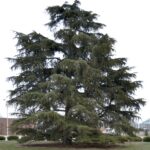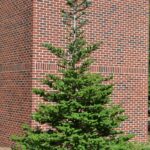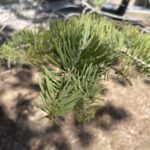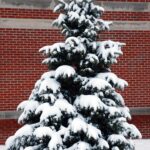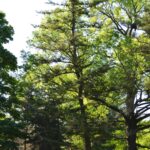Additional Information
Widely adaptable, the Cedar of Lebanon was considered hardy from Zone 7 southward until hardy strains were imported from higher elevations in Asia Minor, beginning with the Arnold Arboretum expedition in 1903. The Cedar of Lebanon prefers pollution-free, open, and sunny areas. It is difficult to transplant and is not tolerant of air pollution or shade. This tree is also very difficult to propagate from cuttings (i.e. asexually). It is the most cold-hardy of the true cedars; the Purdue Hardy Cedar of Lebanon, growing on the campus of Purdue University in West Lafayette, Indiana, has been able to withstand Indiana's sometimes harsh winters (zone 5a, -20 degrees Fahrenheit) without too much browning. The fascinating history behind the Purdue Hardy Cedar of Lebanon began with the late Purdue professor, Ted Shaw, a professor in the Forestry department at Purdue, work in the Middle East. Shaw had been in Lebanon working on a U.S. government supported project relating to deforestation in the 1950s. It has been said that he collected around 200 seeds from this species "up in the hills" of Lebanon. Some speculate that it was in the mountains of Turkey rather than Lebanon, since most species that have grown outdoors successfully tend to be in Zones 6 and higher. Shaw came back to Purdue and germinated the seeds he obtained from the Middle East region, which were then transplanted into nursery pots to grow out for several years. Russell K. Brown oversaw the project and eventually many of the saplings were planted on campus and others were eventually given as gifts from the late Professor Shaw. Though most have not survived Indiana's tough winters, one tree in particular (located behind the Nelson Food Science Building) has shown brilliant resistance to the harsh winter temperatures. There are two other, much younger, specimens of the Cedar of Lebanon at Purdue University. Although the exact history of these two young cedars has been lost, it is suspected that they were propagated from the specimen behind the Nelson Food Science Building. The wood of the Cedar of Lebanon was used to build Solomon's temple.
